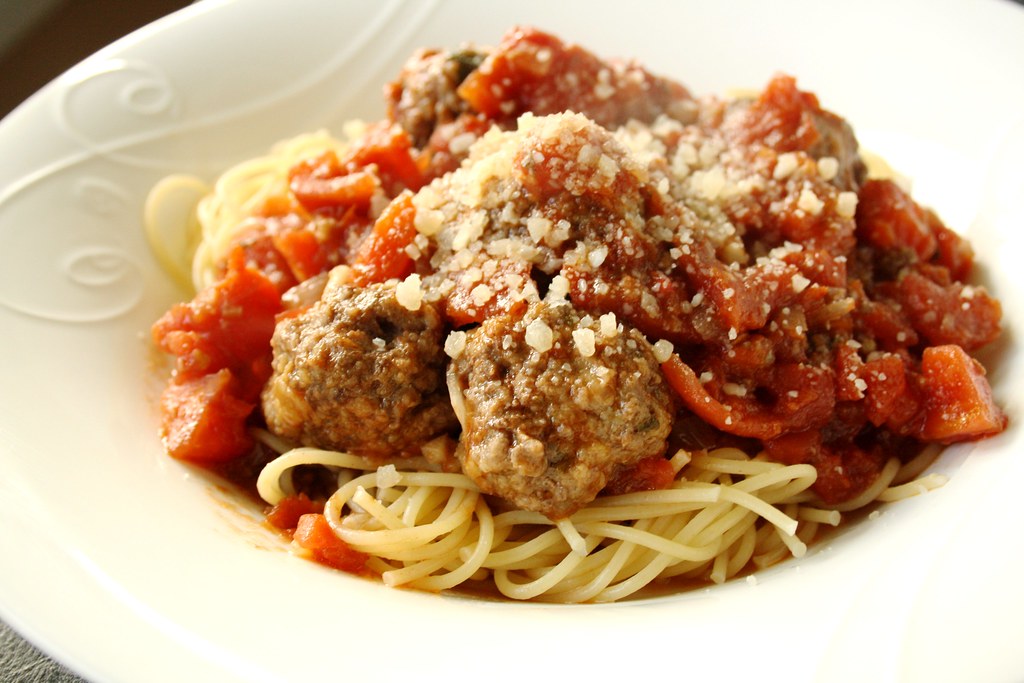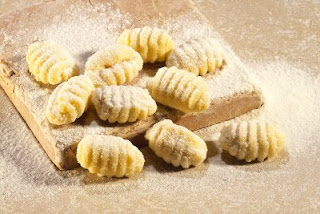Monday, 28 February 2011
Ham and parmesan chicken breast
How to prepare a fresh chilli
Thursday, 24 February 2011
Basic Cooking - Egg Noodles
Now, these aren't the typical egg noodles you'd expect - that is to say, fresh pasta made with egg. These are actually egg noodles - made entirely from egg.
You start them out as your typical omelet - whisk a few eggs in a bowl until homogeneous, add salt and pepper to your liking, and you may even thin it with water or milk. The reason you need to do that is that you'll cook this like pancakes, pouring one thin layer at a time in the frying pan.
You should get a few egg pancakes in the end, wafer thin and nice and round.
Roll them up together, like a cigar, then grab a knife and cut it in 1cm roundels.
This is what you should get - wonderful roundels of egg noodles - break them up with your hands and add them to your salad, sandwich or breakfast.
Enjoy!
Wednesday, 23 February 2011
Breakfast of Champions?
Since I'm on a diet, this is what my breakfast usually looks like nowadays. No worries though, it's sort of a challenge to work with the diet restrictions and still provide something tasty.
It's a simple dish: the toasted ciabatta slice is rubbed with a little garlic, the meat is left-over grill from the night before and the radish, diced red pepper and lettuce leaves are sprinkled with a bit of lemon juice.
Quick Rosemary Pork
What you'll need:
- 2-3 pork cuts (shin, sirloin, really whatever is to your liking)
- 2-3 sticks of rosemary
- salt and pepper
- olive oil
- 2-3 pork cuts (shin, sirloin, really whatever is to your liking)
- 2-3 sticks of rosemary
- salt and pepper
- olive oil
Turn on the hub and put your grittle pan on the fire, and let it heat up while you prepare the meat. It needs to get screaming hot so you won't burn your meat and smoke up your kitchen - and don't oil it!
Get your cuts of meat and sprinkle them with a good amount of sea salt and pepper, on both sides. Break off your rosemary on top of the meat so you cover the top side, then throw in a few swigs of olive oil - then go on and rub the seasoning into the meat. Use your hands, don't be afraid to get messy!
Cook the meat to your liking. I usually prefer mine medium-rare but be sure to turn the meat on each side. Give it one minute on the side without rosemary, flip them, add rosemary to the bottom side now turned up, and repeat until cooked. It usually needs 1 minute per cm of thickness.
After you've cooked it, let it rest on a wooden board and add a few more swigs of olive oil. Leave it for about 2-3 minutes, then cut or serve directly. Gather up the juices and oil on the board, mix it up with your finger then pour it on top of the meat.
Brilliant!
Tuesday, 22 February 2011
An essential video on essential knife techniques
Thanks, Jamie!
Tips For Cooking The Best Pasta
Pasta is one of my favorite dishes, and it's dead simple to cook. Follow these instructions to get great results:
• Always allow the water in the pot to come to the boil before adding your pasta.
• Make sure to always season the water with salt. This seasons the pasta from the outside, and after it's cooked you can't season it anymore.
• You should try cooking your pasta al dente (‘to the tooth’). It should be soft but still have a bite and firmness to it. Take a look at the cooking time on the pasta packet, but use that as a guideline and try to cook it slighlty under that time (say, 8 minutes for a 9 minute variety)
• Don't allow the pasta to cool off or drain it too much. A lot of people throw their pasta into a colander an run cold water over it for 4-5 minutes, or let it rest for a long time. If you have to drain it, do it quickly and then serve them immediately - or throw them into the pan with your sauce.
Generally, ravioli or tortellini (any kind of non-string, filled pasta) usually goes better with thicker, richer sauces such as cheese-based sauces, carbonara, and so forth, because their shapes retain more of that rich, flavored sauce. Tagliatelle, fettucine, linguine, etc are usually associated with red sauces (generally variants of the meat ragu or tomato basil sauce) or fresher, lighter dressings.
Generally, ravioli or tortellini (any kind of non-string, filled pasta) usually goes better with thicker, richer sauces such as cheese-based sauces, carbonara, and so forth, because their shapes retain more of that rich, flavored sauce. Tagliatelle, fettucine, linguine, etc are usually associated with red sauces (generally variants of the meat ragu or tomato basil sauce) or fresher, lighter dressings.
To go with some simple pasta try these two very basic sauces:
Pesto : http://www.jamieshomecookingskills.com/recipe.php?title=classic-basil-pesto
Tomato: http://www.jamieoliver.com/recipes/vegeterian-recipes/the-quickest-tomato-sauce
Chilli Con Carne & Healthy Cracker Salad Cookout
This is a cookout my and my mates did three weeks ago, where I made chilli con carne and a side of salad (cabbage, carrot, kiwi, tomato, chilli, peppers and cheese, with a yogurt-lemon dressing). Thanks to all the guys for sharing in the costs and of course, for loving the food!
Hugs
And here's a clip of Andrei messing around and also dissing my food :)
A (Quick?) Guide To Pasta
Pasta is by far my favorite food. It's typical for many cultures and cuisines, but the mother of all pasta is Italy (that's where term pasta comes from, derived from the latin name for dough or pastry cake). There is a considerable variety of Italian pasta out there, and for those of you who are slightly confused by this bewildering assortment, here's a quick visual aid.
Gnocchi are the thick, dumpling-style pasta made from semolina or wheat flower. They come in smaller versions called gnochetti.
Tortellini are ring shaped and usually stuffed with ingredients such as cheese or spinach.
Agnolotti is a variety of ravioli shaped like a crescent or semi-circle.
Vermicelli are very thin pasta, also called orati, pancardelle, minutelli and fermentini.
Canneloni start out as rectangular sheets rolled into a tube. They're absolutely delish in oven-cooked pasta dishes (try canneloni con spinachi al forno)
Linguine are basically flattened spaghetti, but they're just as raving delicious.
Pizzocheri are very short tagliatelle made from buckwheat flower.
Bucatini are long, pierced pasta - hence their name, derived from bucato (pierced).
Spaghetti - when somebody says pasta, this is probably what you think of first.
Macaroni are machine made and usually do not contain egg in the dough. The name macaroni only refers to the dough type, so they come in many shapes and sizes.
Tagliatelle are one of my favorite pasta, similar to fettucine but broader - and they're amazing with bolognese.
Farfalle are the well-known bow tie pasta, easy to make and absolutely delicious.
Fettucine is italian for little ribbons and are probably the best choice for a meat ragu. Pappardelle are very
broad fettucine.
broad fettucine.
Fussili are the archetypal corkscrew-shaped pasta.
Ravioli are pocket-shaped filled pasta, cousins of the agnolotti.
Lasagna is a classic sheet pasta and one of the best things to stick in an oven.
Mafaldine look like ridged fettucine, named in the honor of Mafalda of Savoy - little queens indeed.
Capellini is one of the thinnest type of pasta, similar to spaghettini or vermicelli.
Penne are cylinder shaped pasta that come in smooth and rigata (ribbed) versions.
Subscribe to:
Comments (Atom)



























